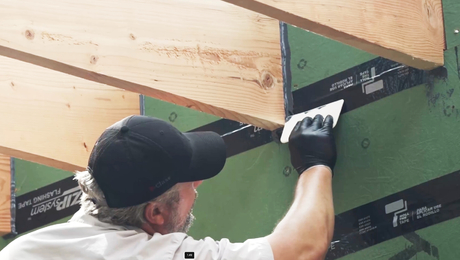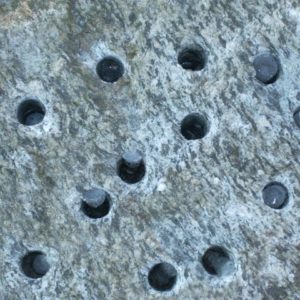So I have this little piece of ledge in my yard, getting tired of mowing around it. My uncle claimed if you build a hot fire on a rock, then douse it with it cold water, it will split. Tried that last fall…Good hot hardwood fire down to coals for a few hours, then hit it with ice water…No dice. That rock WAS hot for quite a while afterward tho. Maybe the thermal mass of the ground working against me. Also heard about boring holes and letting water/ice break it apart. Rented a rotary hammer a couple of weeks ago (makita, great tool to use) and poked a bunch of 1/2×3″ in it, filled’em with water and waited a few days. Still no dice. I noticed, however, this odd way the ice slugs melt. Maybe the thermal mass working against me again? Has anybody ever had luck with these old timey methods?
Discussion Forum
Discussion Forum
Up Next
Video Shorts
Featured Story

Michael Hindle explores the efficacy of deep energy retrofits and discusses essential considerations for effective climate mitigation.
Featured Video
SawStop's Portable Tablesaw is Bigger and Better Than BeforeHighlights
"I have learned so much thanks to the searchable articles on the FHB website. I can confidently say that I expect to be a life-long subscriber." - M.K.


















Replies
I have read that in the old days in the VT stone quarries, they'd drill a hole, wedge a piece of porous 'wet' wood in, AND fill it with water AND come back in the spring....
In your picture, the slugs of ice that formed were able to expand vertically to relieve the pressure.
If you can drill cone-shaped holes, the ice will be trapped for much greater force. 3" holes seem fairly shallow for your purpose.
There's also a product called B/Mite that's made to be poured into holes where it expands and breaks up concrete. Never tried it, but I saw a show where the homeowner used it or a product similar to it to fracture a big slab of concrete.
Yeah, I priced a similar product...Dekspan (?) or something. I remember it being a bit expensive. Might just buy a new blade for the cutoff saw, crosshatch it, then attack with a sledge. Had no idea how deep a hole I needed to drill!
have you thought about feathers and wedges?
Both techniques do indeed work, but it depends a lot on the type of the rock. And probably for the ice in a hole technique to work you need a larger hole -- maybe 2" -- and the holes should be drilled in a line (along which you want the split to occur).
Re fire, I've seen limestone rocks literally explode in a fire.
You actually expected 1/2x3" to work??? Betcha use piffin screws to hang cabinets also
Worked with an old Norwegian guy, he said before Nobel they would build roads in the winter, holes were 4 FEET deep! to crack rock.
Even with black powder, drill holes were typically 4 ft deep or more.
The typical fix for this in an urban setting is to hire a contractor with a tow around compressor and 90lb breaker to jack hammer it out. You could also rent the equipment. If its real small, an electric demeo hammer could work but would be slow. For bigger pieces, a pecker on a hoe would make short work of it. Failing that, in a more rural location, drill and blast. As mentioned, you can't blast in anything less than 3' holes to get any kind of results without big time fly rock.
Have fun
! It's not like there's an
! It's not like there's an instruction manual! Shoulda made'em deeper while I had the tool
Ledge isn't a rock, it's
Ledge isn't a rock, it's bedrock. It's not like breaking an individual stone. All you can do is break a hunk off and it won't be easy without explosives, or as much fun. The other option is a demo hammer, start a small bite on the edge and work your way back. Drilling a series of holes can help create a fracture line. This is typical for harvesting granite in quarries but they are working with the grain and an open side. You could drill a line of holes, break to that point, repeat.